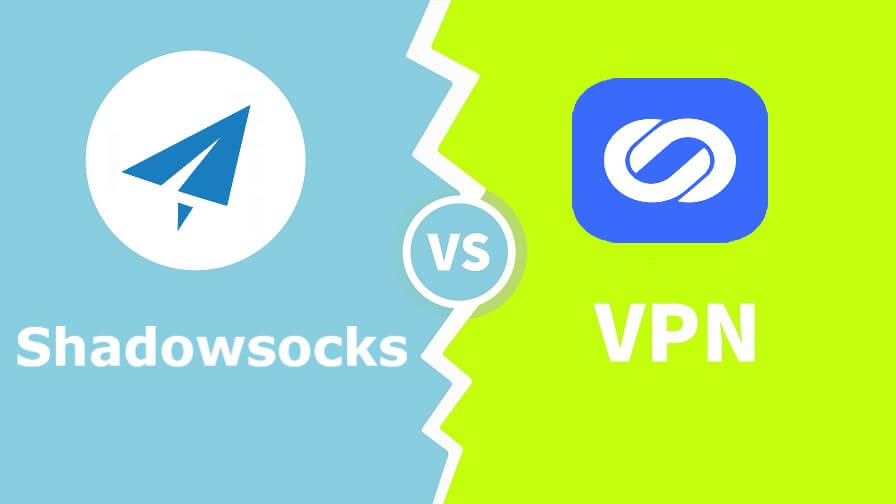Due to the Great Firewall of China, Chinese people need to bypass restrictions to use Google services, post on Facebook, stream videos on YouTube and so on.
VPN is a commonly used tool in China to help them access blocked content and services. In 2012, a Chinese created Shadowsocks to circumvent Internet censorship in China and shared it on GitHub. Shadowsocks, or SS for short, became popular among Chinese netizens.
Since it’s easy to feel confused about Shadowsocks and a VPN, I would like to make an introduction from the following four parts:
What is a VPN?
On the one hand, a VPN unblocks websites, which is exactly what Shadowsocks do for you. On the other hand, it builds a private network to transfer data at the network layer. A VPN, known as a virtual private network, encrypts your communication online. It is widely used in enterprise and university networks. When you connect to a VPN, you’re actually connecting to a private network. Your Internet access goes through this private network. Whether the communication between you and the VPN is encrypted or not depends on the VPN protocol it uses.
What is SS / SSR?
SS (Shadowsocks): It was created by clowwindy to get past the GFW in 2012. Then, the developer thought it was useful to unblock websites because it is hard to be detected while ensures a fast Internet connection. Thus, clowwindy shared it with others on GitHub. In 2015, however, the creator was under the pressure from the Chinese government. As a result, clowwindy deleted code on Github and promised not to participate in any maintenance or update of Shadowsocks.
SSR (ShadowsocksR): After what happened to Shadowsocks in 2015, another developer, breakwa11 claimed that SS is easy to be detected by the GFW. So, breakwa11 created ShadowsocksR on the base of Shadowsocks, which supported obfuscation.
Later on, breakwa11 also removed all code on GitHub due to the threat from a human flesh search. This developer dissolved relevant groups and stopped developing Shadowsocks. SSR had already been forked by many people and there were also new versions based on SSR. SSRR is a well-known example.
How does Shadowsocks works?
Both SS and SSR work in the same way. They are proxies based on SOCKS5. SOCKS proxies transfer data packets regardless of the transfer protocol. So SOCKS proxies are much faster than other application-layer proxies. SOCKS5 proxy passes your data request through a connection between you and the proxy server which forwards your request to the destination. During this process, your data request won’t pass through a dedicated tunnel. There is no extra processing when the data packet is sent to the proxy server. Generally speaking, when you want to check your Gmail, you can send your request to a server in Hong Kong via SOCKS5 connection. Then, your server in Hong Kong that receives your request will visit Google and return the result of this request to you.
Shadowsocks offers three modes. Direct connection mode doesn’t redirect your traffic through the proxy server. Preferences preset for some apps still work in this mode. If the PAC mode the enabled, the traffic will go through the proxy server when accessing websites blocked by GFW. While Global mode reroutes all traffic through the proxy server. Users can choose a mode that satisfies their needs.
Differences between a VPN and SS: advantages and disadvantages
Differences between a VPN and SS:
Shadowsocks is designed to bypass the geographical restriction. It is based on SOCKS5 proxy but different from a normal proxy. Because it has some features that are specially designed to circumvent the GFW.
There is no established private tunnel between the client and the server. The client communicates with the actual server you are going to access via the proxy server. All data should be transferred through the proxy server.
VPN is the abbreviation of virtual private network. Using a VPN service means connecting to a private network. All Internet traffic should travel through this private network to the destination. At the same time, the user’s IP address also becomes the IP address assigned by the VPN.
Pros and cons of a VPN and Shadowsocks:
Shadowsocks is open-source and can be constantly developed.
The SOCKS5 doesn’t require a handshake other than a TCP connection. Each request only forwards one connection and it doesn’t require a connection all the time. Thus, it is relatively fast and power-saving for mobile devices.
Shadowsocks is good at disguising the traffic as normal HTTP / SOCKS traffic so that it is difficult to detect. While VPNs can be easily detected and blocked.
Shadowsocks allow users to decide what traffic goes through the proxy server by choosing different modes. While all traffic should be passed through the VPN.
Shadowsocks is only capable of redirecting traffic. While a VPN encrypts the traffic and ensures data security.
Users can mask their IP addresses with those of the VPN servers. So, they are able to pretend to be in other locations.
Conclusion:
SS / SSR would be better for those who only want to bypass Internet censorship. The cost of SS / SSR is very low when compared with a VPN. If you Google a VPN, you will know that VPNs are relatively expensive. Although there are some free VPNs, we don’t recommend users choose them. If you are more concerned about data security, you should choose a reputable VPN like RitaVPN. You can also read RitaVPN reviews to know what others think of this VPN.






